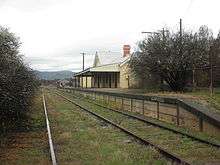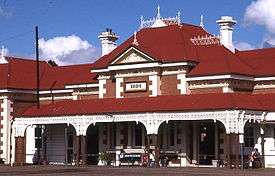Gwabegar railway line
| Gwabegar Line | ||||||||||||||||||||||||||||||||||||||||||||||||||||||||||||||||||||||||||||||||||||||||||||||||||||||||||||||||||||||||||||||||||||||||||||||||||||||||||||||||||||||||||||||||||||||||||||||||||||||||||||||||||||||||||||||||||||||||||||||||||||||||||||||||||||||||||||||||||||||||||||||||||||||||||||||||||||||||||||||||||||||||||||||||||||||||||||||||||||||||||||||||||||||||||||||||||||||||||||||||||||||||||||||||||||||||||||||||||||||||||||||||||||||||||||||||||||||||||
|---|---|---|---|---|---|---|---|---|---|---|---|---|---|---|---|---|---|---|---|---|---|---|---|---|---|---|---|---|---|---|---|---|---|---|---|---|---|---|---|---|---|---|---|---|---|---|---|---|---|---|---|---|---|---|---|---|---|---|---|---|---|---|---|---|---|---|---|---|---|---|---|---|---|---|---|---|---|---|---|---|---|---|---|---|---|---|---|---|---|---|---|---|---|---|---|---|---|---|---|---|---|---|---|---|---|---|---|---|---|---|---|---|---|---|---|---|---|---|---|---|---|---|---|---|---|---|---|---|---|---|---|---|---|---|---|---|---|---|---|---|---|---|---|---|---|---|---|---|---|---|---|---|---|---|---|---|---|---|---|---|---|---|---|---|---|---|---|---|---|---|---|---|---|---|---|---|---|---|---|---|---|---|---|---|---|---|---|---|---|---|---|---|---|---|---|---|---|---|---|---|---|---|---|---|---|---|---|---|---|---|---|---|---|---|---|---|---|---|---|---|---|---|---|---|---|---|---|---|---|---|---|---|---|---|---|---|---|---|---|---|---|---|---|---|---|---|---|---|---|---|---|---|---|---|---|---|---|---|---|---|---|---|---|---|---|---|---|---|---|---|---|---|---|---|---|---|---|---|---|---|---|---|---|---|---|---|---|---|---|---|---|---|---|---|---|---|---|---|---|---|---|---|---|---|---|---|---|---|---|---|---|---|---|---|---|---|---|---|---|---|---|---|---|---|---|---|---|---|---|---|---|---|---|---|---|---|---|---|---|---|---|---|---|---|---|---|---|---|---|---|---|---|---|---|---|---|---|---|---|---|---|---|---|---|---|---|---|---|---|---|---|---|---|---|---|---|---|---|---|---|---|---|---|---|---|---|---|---|---|---|---|---|---|---|---|---|---|---|---|---|---|---|---|---|---|---|---|---|---|---|---|---|---|---|---|---|---|---|---|---|---|---|---|---|---|---|---|---|---|---|---|---|---|---|---|---|---|---|---|---|---|---|---|---|---|---|---|---|---|---|---|---|---|---|---|---|---|---|---|---|---|---|---|---|---|---|---|---|---|---|---|---|---|---|
| ||||||||||||||||||||||||||||||||||||||||||||||||||||||||||||||||||||||||||||||||||||||||||||||||||||||||||||||||||||||||||||||||||||||||||||||||||||||||||||||||||||||||||||||||||||||||||||||||||||||||||||||||||||||||||||||||||||||||||||||||||||||||||||||||||||||||||||||||||||||||||||||||||||||||||||||||||||||||||||||||||||||||||||||||||||||||||||||||||||||||||||||||||||||||||||||||||||||||||||||||||||||||||||||||||||||||||||||||||||||||||||||||||||||||||||||||||||||||||
Legend | ||||||||||||||||||||||||||||||||||||||||||||||||||||||||||||||||||||||||||||||||||||||||||||||||||||||||||||||||||||||||||||||||||||||||||||||||||||||||||||||||||||||||||||||||||||||||||||||||||||||||||||||||||||||||||||||||||||||||||||||||||||||||||||||||||||||||||||||||||||||||||||||||||||||||||||||||||||||||||||||||||||||||||||||||||||||||||||||||||||||||||||||||||||||||||||||||||||||||||||||||||||||||||||||||||||||||||||||||||||||||||||||||||||||||||||||||||||||||||
| ||||||||||||||||||||||||||||||||||||||||||||||||||||||||||||||||||||||||||||||||||||||||||||||||||||||||||||||||||||||||||||||||||||||||||||||||||||||||||||||||||||||||||||||||||||||||||||||||||||||||||||||||||||||||||||||||||||||||||||||||||||||||||||||||||||||||||||||||||||||||||||||||||||||||||||||||||||||||||||||||||||||||||||||||||||||||||||||||||||||||||||||||||||||||||||||||||||||||||||||||||||||||||||||||||||||||||||||||||||||||||||||||||||||||||||||||||||||||||
The Gwabegar railway line is a railway line in the west of New South Wales, Australia which passes through the town of Mudgee to Gulgong and eventually heads to Gwabegar.
The section from Wallerawang to Capertee was opened on 15 May 1882; the section from Capertee to Rylstone on 9 June 1884; the section from Rylstone to Mudgee on 10 September 1884; the section from Mudgee to Gulgong on 14 April 1909; the section from Gulgong to Dunedoo on 28 November 1910; the section from Dunedoo to Binnaway on 2 April 1917; the section from Binnaway to Coonabarabran on 11 June 1917 and, finally, the section from Coonabarabran to Gwabegar on 10 September 1923.[1]
Description

The line branches from the Main Western line at Wallerawang and heads north through the townships of Kandos, Rylstone and Mudgee before reaching the junction of the Sandy Hollow to Gulgong line at Gulgong.
The section between Kandos and Gulgong, which for several years was used only for heritage trains running around once per month was subject to heavy speed restrictions.[2] The line had previously been closed from 2 March 1992 until 2 September 2000 but was reopened after repairs.[3][4] The Rail Infrastructure Corporation (RIC) announced in May 2007 that the line north of Kandos would be suspended from use from 30 June 2007.[5] The effect of this suspension is that the line has ceased carrying trains indefinitely although legally it remains open.
The section between Binnaway and Gwabegar is out of use, having closed on 28 October 2005 by the RIC for safety reasons. The line is booked out of use north of Charbon Colliery, but is able to be opened for charter services to operate as far as Kandos.[6][7]
In February 2016 the section from Kandos to Rylstone was reopened for a heritage 660/720 class railcar trip from Lithgow.[8]
Services
The primary traffic on the line are coal trains from the Baal Bone and Charbon collieries which opened in July and December 1986.[9][10][11][12] These trains are operated by Pacific National and Southern Shorthaul Railroad respectively.
Passenger services from Lithgow to Mudgee and Gulgong were operated by 620/720 and later DEB sets until replaced by coaches in the early 1980s.
References
- ↑ "The Wallerawang - Gwabegar Branch Line" Australian Railway Historical Society Bulletin January 1968 & August 1968
- ↑ Railway Digest, April 2007.
- ↑ Gwabegar Line NSWrail.net
- ↑ "Freight Traffic Doubts for Mudgee and Blayney to Cowra Lines" Railway Digest October 2000 page 5
- ↑ Gulgong-Kandos rail line to be suspended from use ABC News 25 May 2007
- ↑ "Signaling & infastructure" Railway Digest November 2014 page 42
- ↑ "Signaling & infastructure" Railway Digest February 2015 page 43
- ↑ "The Rylstone Rambler" Railway Digest April 2016 page 56
- ↑ "Western Report" Railway Digest September 1986 page 280
- ↑ "Western Report" Railway Digest February 1987 page 52
- ↑ Baal Bone Colliery Glencore
- ↑ Charbon Centennial Coal
External links
- Charbon Branch SA Track & Signal
